Salz - Burg - Sculpture
|
This blog post is about salt. Why? Because today, September 24, the Salzburg State Holiday is celebrated in honor of St. Rupert, first bishop of Salzburg and patron saint of salt mining and salt workers. Also Rupert, who is shown in the artistic representation in the Episcopate and with the attribute of the salt barrel, is the namesake of our original and now the second museum site in the old town, the Rupertinum. Right there, on the levels [1] & [2], as part of the exhibition Salt Years we present the most famous video works by Israeli artist Sigalit Landau. In her videos she discusses not only questions of female identity and physicality, but also the political situation in Israel as well as the man-made environmental problem and the resulting threat to the Dead Sea. At the end of the exhibition in the Rupertinum, there is also a conference room where visitors can find out about Landau's latest project, although it has been operating for years. With Salt Bridge, the artist is pursuing the idea of building a floating salt bridge over the Dead Sea to connect Israel, the West Bank and Jordan. Despite the great benevolence accorded to this project, some still consider it a utopia. Landau counters this with her conviction that art can connect something where politics cannot get any further.
The second part of the exhibition in the level [3] on the Mönchsberg is dedicated to her salt sculptures, which she calls conceptual readymades. Landau has been using the Dead Sea not only as a source of inspiration for her video works and photographic series for more than 15 years, but also as an actual laboratory for making her sculptures. For this purpose, she and her team dive into the Dead Sea for several weeks during the summer, as it is the high outside temperatures that enable the optimal crystallization process in the water. Here, the objects are enclosed by a crust of salt crystals that covers everything and transforms them into amazing sculptures. In addition to specific handicrafts with symbolic character, such as fishing nets and objects made of bent barbed wire, Landau also uses simple everyday objects again and again. The exhibition also includes the pair of high-heeled shoes that the artist wore at the 2011 Venice Biennale, where she designed the Israeli pavilion. Little anecdote on the sidelines: Since the shoes were too uncomfortable for her, Landau simply took them off again, and now they are in their crystallized version as part of an installation amidst other shoe models in our exhibition. The sculptures, which sometimes weigh several hundred kilograms, are not only fragile, terrible and beautiful alike, but also unique in their arrangement in Salzburg. Because Landau arranges her salt sculptures in each exhibition context differently, so that always new and different associations arise and reveal their complexity.
The exhibition Sigalit Landau. Salt Years is shown till November 17, 2019.

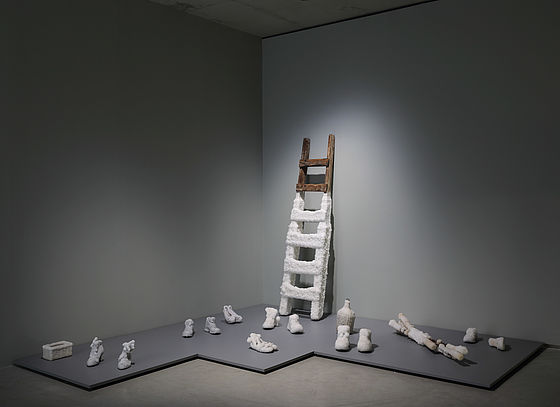
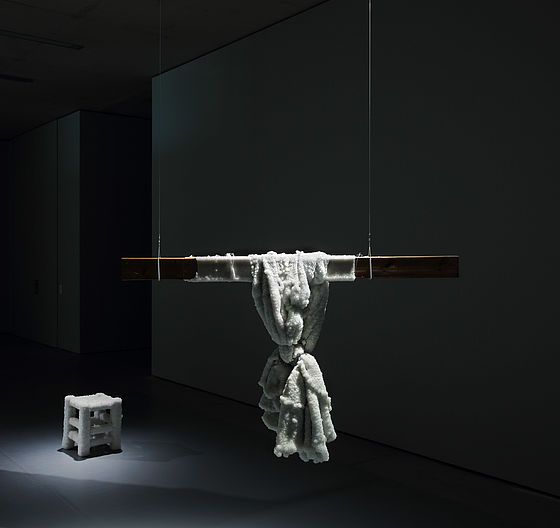
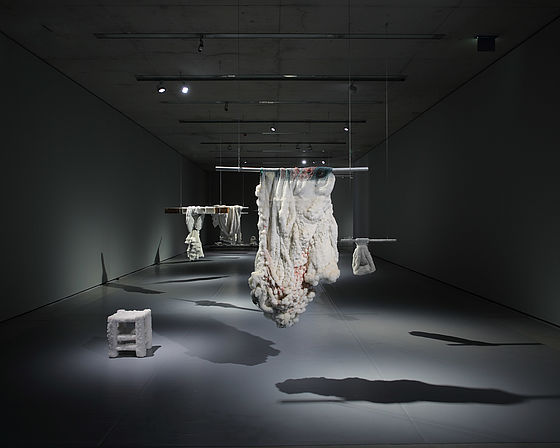
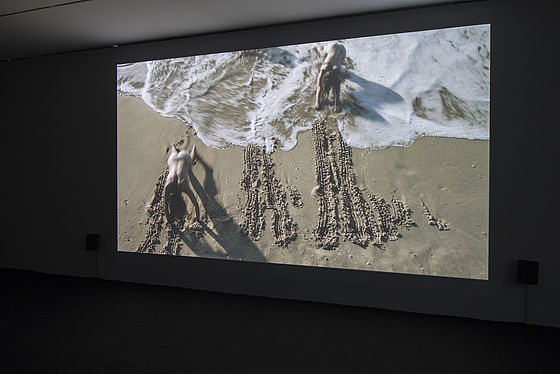
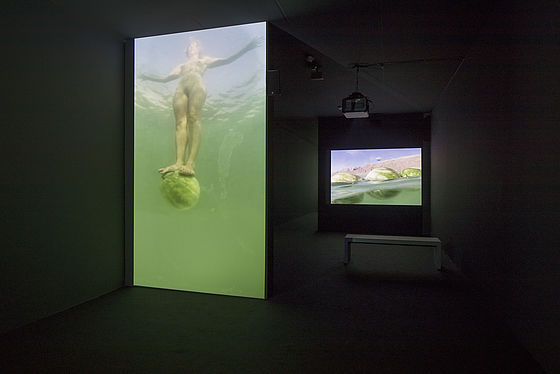
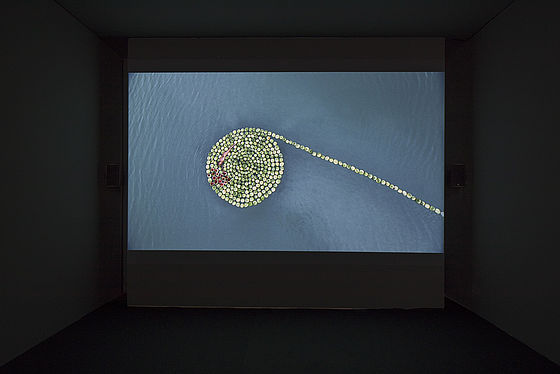
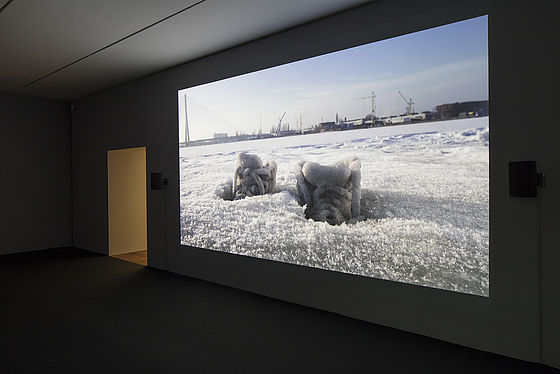
![[Translate to English:] [Translate to English:]](/fileadmin/user_upload/Kunst-Geschichten/Salz-Burg-Skulptur/csm_02a_Ausstellungsansicht_Sigalit_Landau_Moenchsberg_Rainer_Iglar_bff824f4f8.jpg)